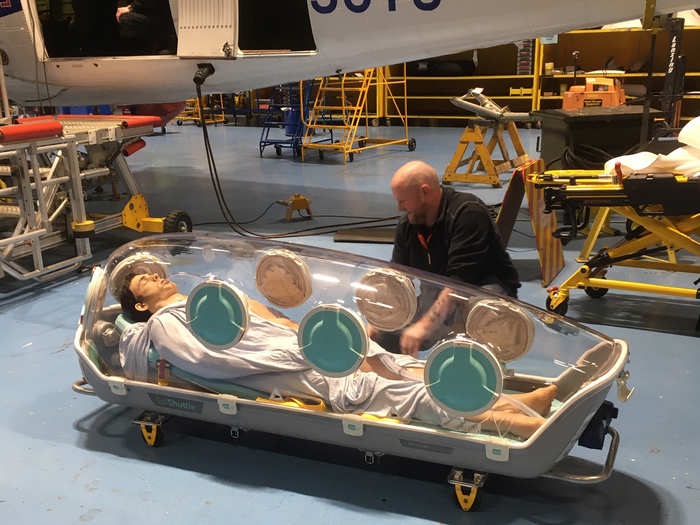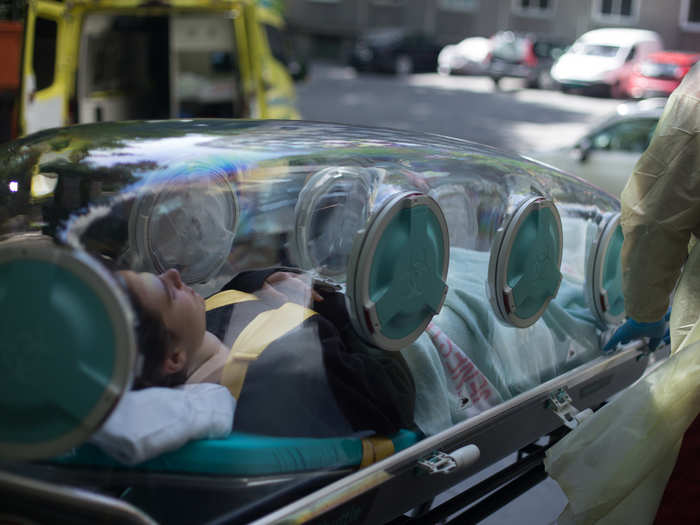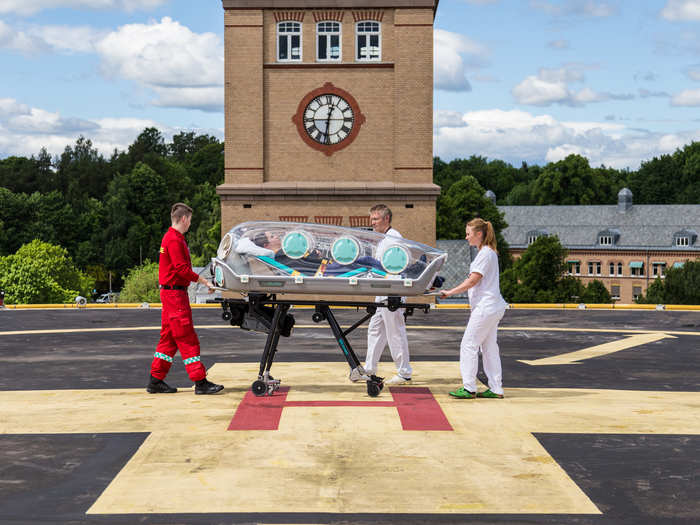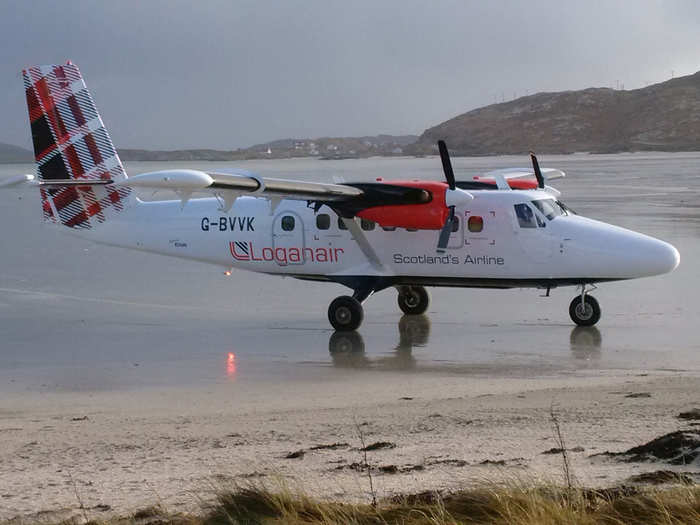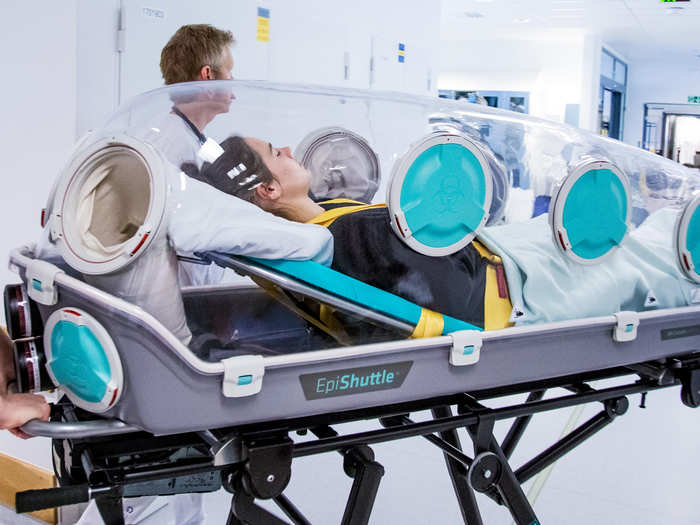The EpiShuttle does not have to be disinfected after every use, saving time and money. And as long as the patient is contained in the isolation pod, medical teams do not need to wear personal protective equipment (PPE), according to EpiGuard.
The EpiShuttle isolation pod has two configuration options: protect the patient in the pod, or protect the pod's surroundings from the patient.
The pod can be disinfected and assembled in under two hours. To compare, an entire ambulance or aircraft requires between two to four hours of disinfection between every patient transport, according to EpiGuard.
The EpiShuttle also has an air ventilation system that can generate both positive and negative air pressure. This means all of the air going in and out of the pod is filtered.
A patient inside of the pod can be intubated, ventilated, and hooked onto IVs and monitoring equipment by using the locked ports around the pod. These ports also allow medical personnel to access the patient's body.
Its see-through polycarbonate hardtop allows for communication between the medical team and the patient.
The ports can also connect to items like sluice bags — to allow medicine, equipment, and food to be channeled into the pod — or waste bags.
In total, a standard EpiShuttle is 58 kilograms, or about 128 pounds, and can hold a 6.5-foot patient that weighs up to 330 pounds.
The pod is powered by a rechargeable 14.4-volt, 1.2-amp-hour lithium-ion battery.
The entire EpiShuttle unit costs around €40,000, about $43,438, according to the DRF Luftrettung.
Loganair and the Scottish Ambulance Service aren't the only ones to take advantage of the EpiGuard technology.
The British Royal Air Force, Royal Norwegian Air Force, Royal Danish Air Force, and German Air Ambulance DRF are also using EpiShuttles now amid the coronavirus pandemic, according to EpiGuard.
Two DRF Luftrettung stations in Germany now have EpiShuttles, according to the DRF Luftrettung. Another eight stations will also soon follow. The Royal Norweigan Air Force has also purchased five pods from EpiGuard, TV2 reported.

